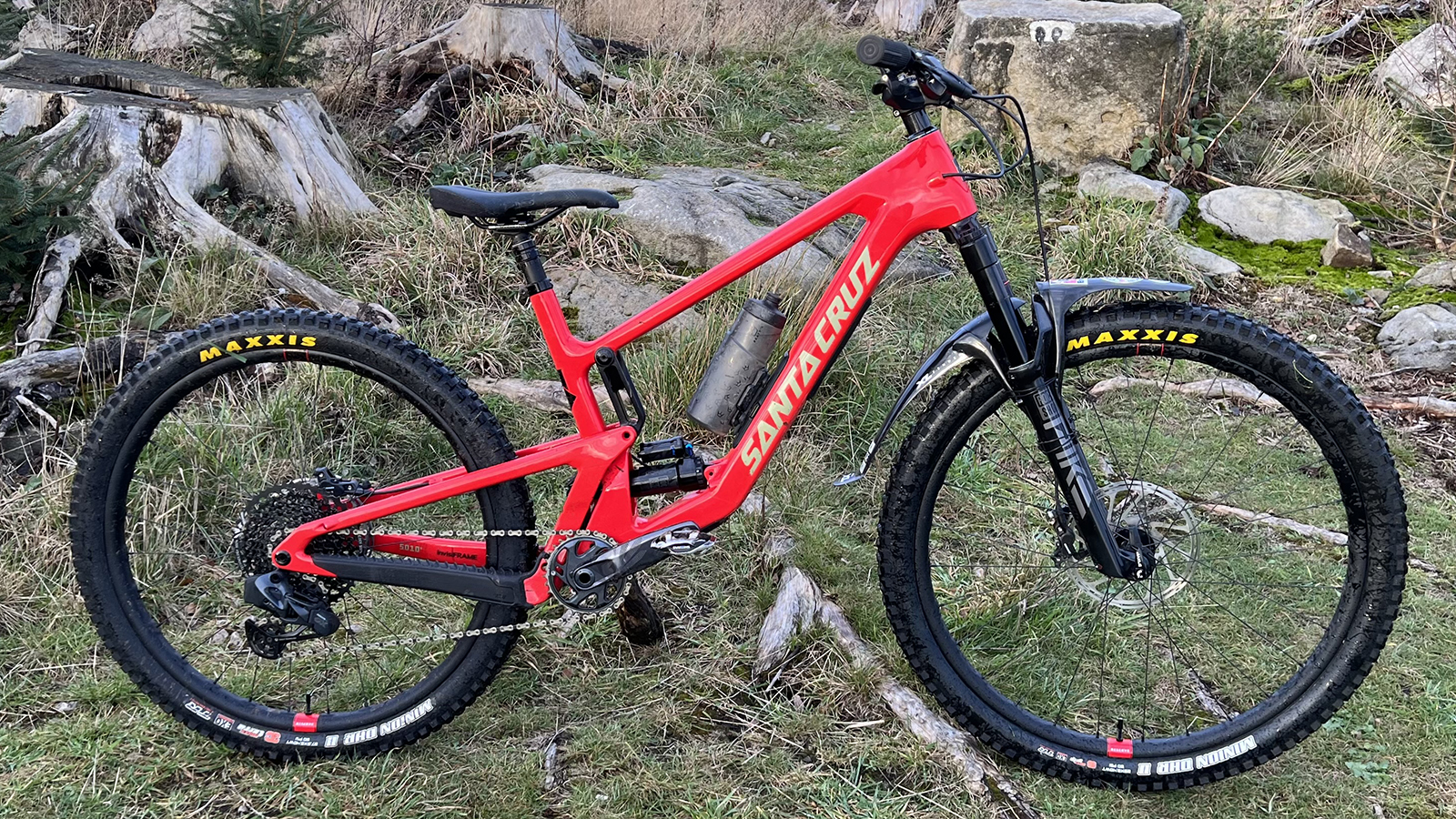
The 5010 has always been the weirdo in the Santa Cruz lineup. Short travel without being XC, bomber tough without big hit suspension, and it’s generally been the last to upsize on wheels too. However, through the 5010's various iterations it’s picked up one of the strongest cult followings of any bike from any brand.
Born from the infamous Blur 4X (the short travel hardcore bike so many people claim to have had and loved – it’s the equivalent of being at the first Sex Pistols gig), it went through several other Blur TR / TRC iterations before eventually becoming its own bike as the Solo. Fittingly that caused a legal stink with another brand who already had a bike with the same name, so Santa Cruz IP squinted its eyes and called it the 5010 instead. Its defiantly individualistic attitude has carried on through the transfer from 26in to 27.5in wheels though, and V4 was probably the closest you’d get to a rodeo bull with wheels.
The new 5010 V5 calms things down a bit with a 29in wheel up front, less pedal reactive suspension and ‘adulting’ features like internal storage which make it nearly a kilo heavier than the V4. So does it still have the trademark agility and insolence that’s always made it the ‘riders' trail bike in Santa Cruz’s lineup or is it the Mark III Golf GTi that kills the Solo spark?
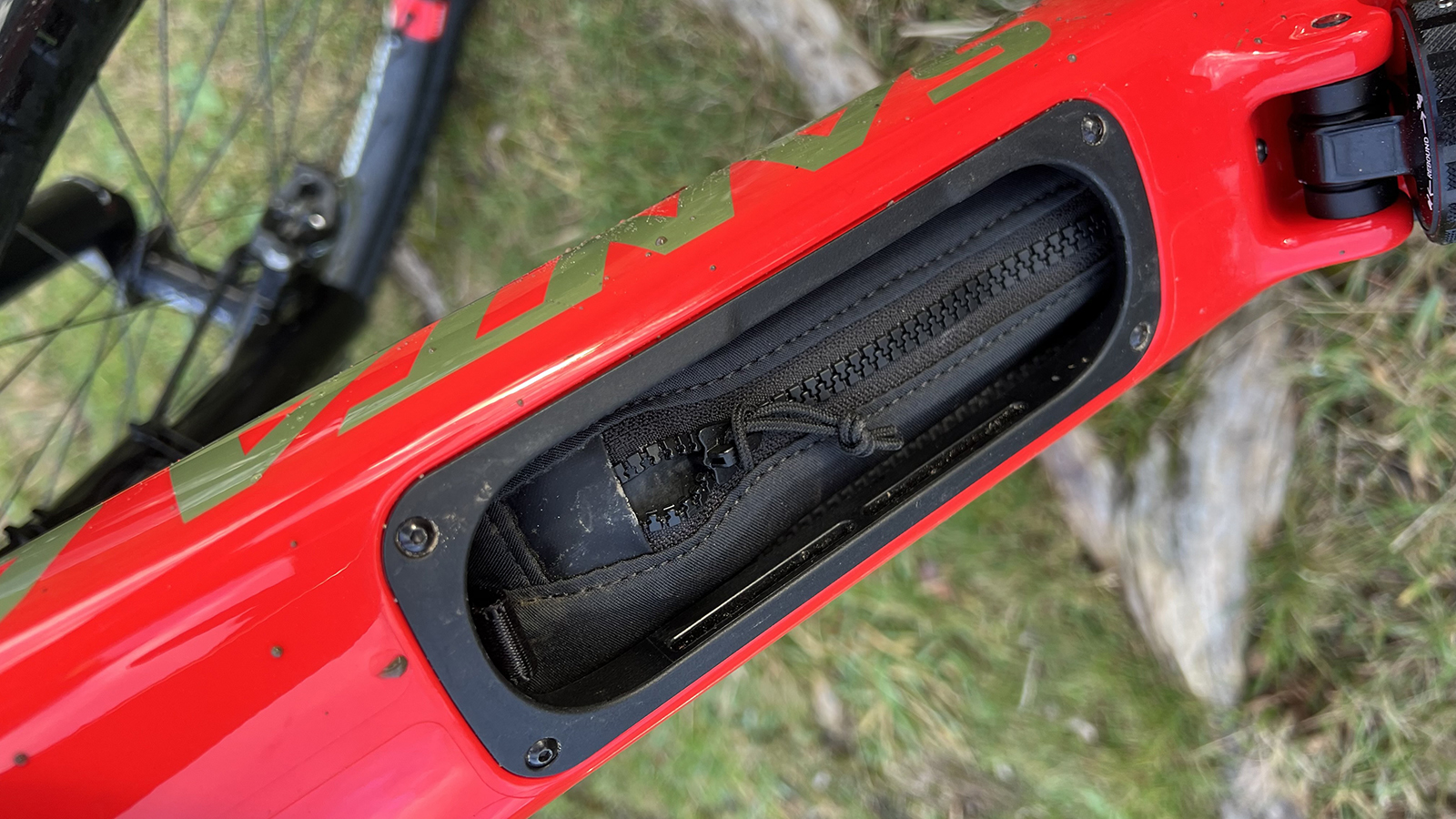
Design and geometry
If Google and my editor weren’t so eagle eyed at spotting repeats, I could trot out the same structural description for the 5010 as I have for every other current generation Santa Cruz trail bike. Stout mainframe with hefty but impressively sealed and rattle-free ‘glovebox’ internal storage with a neoprene ‘tube purse’ and ‘tool wallet’. Plenty of rock and uplift proofing armor and frame, not headset, routed internal cabling with full guide pipes. The conventional screw-in bottom bracket which Santa Cruz resolutely stuck with when nearly everyone else threw us under the squeaky, creaky, press-fit bearing bus. Stiff single piece rear swingarm with more armor, a Burgtec axle and a SRAM UDH hanger.
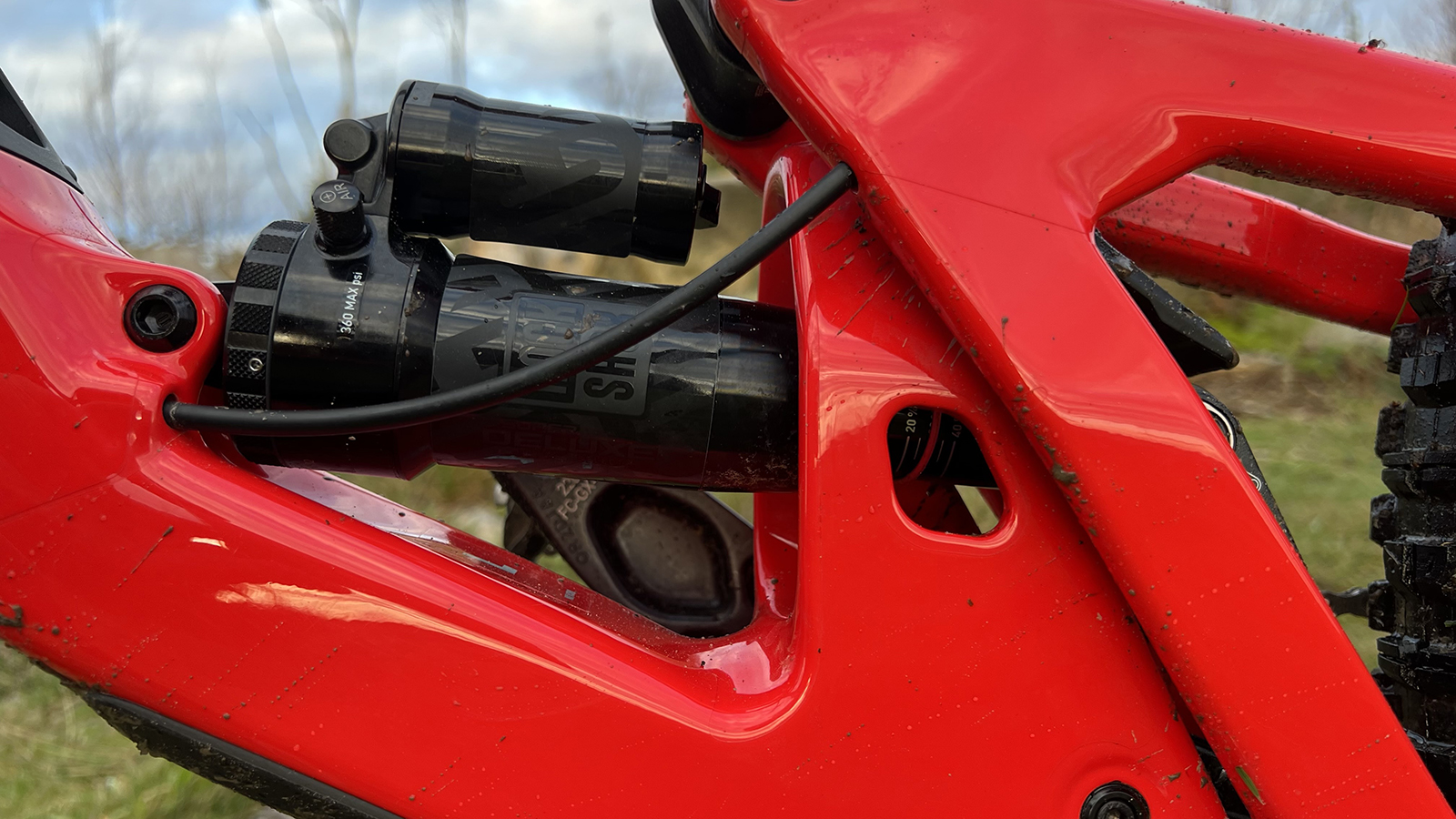
The rear end gets VPP twin link suspension with a mid-length upper link hanging off the top tube and a shorter lower knuckle driving the shock through the seat tube just above the BB. The shock sits on big fat bearings at the rear secured with an awkward to access hi/lo geometry flip-chip. There’s a window in the offside seatstay strut to let you see the sag marker on the shock though. The pivots are a DIY serviceable collet design and they’re mounted in the links not the frame – so they won’t kill your frame if you let them get too loose. They’re also covered by a lifetime warranty and the lower link gets a handy grease nipple so you can purge old lube out with fresh.
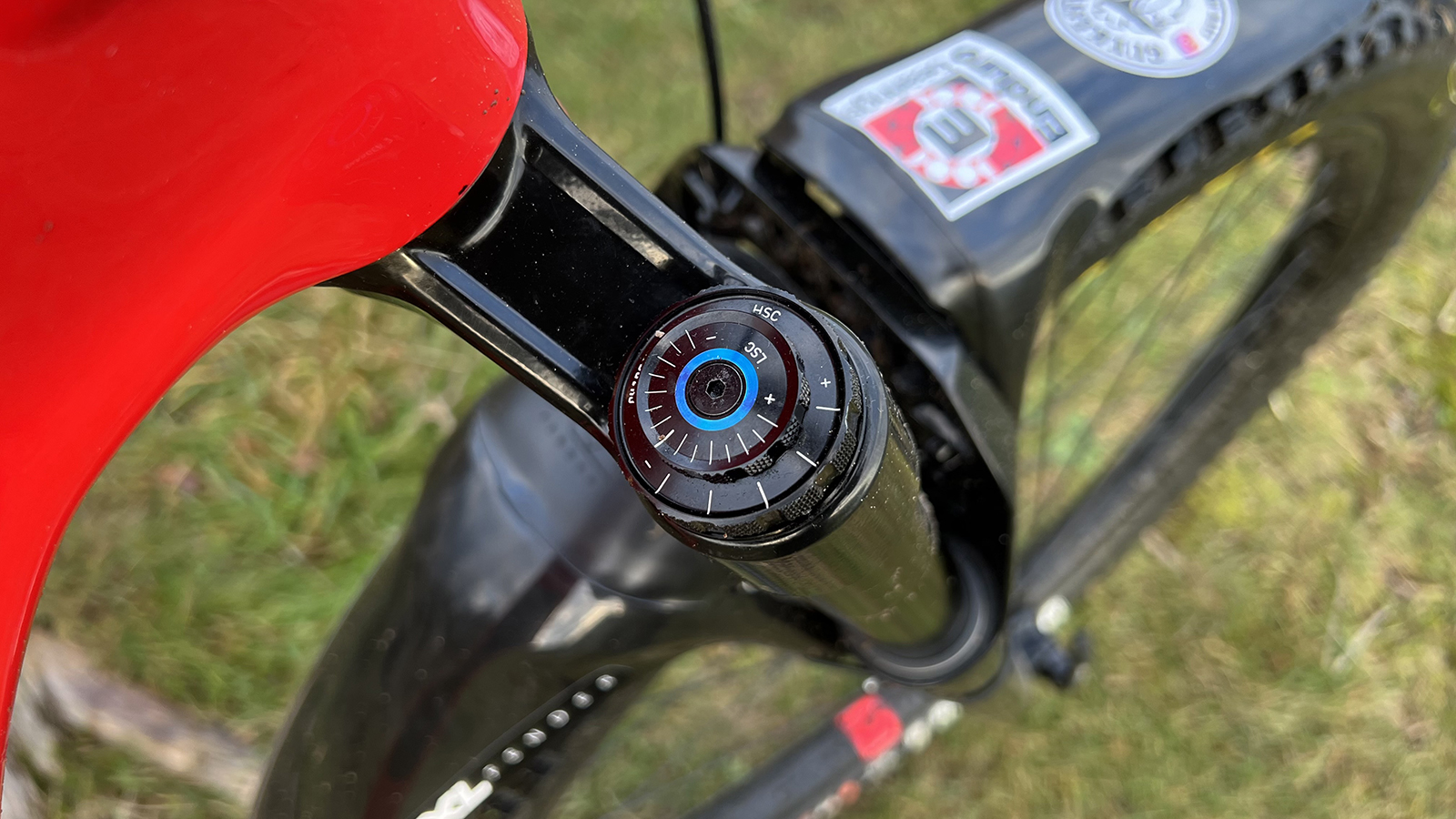
It comes in two flavors of carbon. Top spec ‘CC’ and the ‘C’ reviewed here – which is around half a pound / 200g heavier but hits all the same stiffness and strength numbers. Those numbers – and rear center lengths – vary depending on frame size, so you should get a similar ride vibe from XS to XXL. And yes, that is a big size range at a time we’re increasingly seeing brands squeeze down options to increase profitability. And despite some obvious opportunity to share pieces like swingarms or even mainframes between bikes, Santa Cruz assures us that every bike is living its best individual life, not splicing with siblings.
Weight and shape numbers are mostly where you’d expect them to be compared to other Santa Cruz bikes. At 65.2/64.9 degrees, it’s half a degree steeper in the head and 600g lighter than the 160/150mm travel Bronson that it shares 29in front, 27.5in back MX wheels with. It’s half a degree slacker and 500g heavier in equivalent spec than the 130/120mm travel 29er Tallboy. The fact that it’s actually fractionally longer in the seatstays despite the MX setup is an interesting aspect wheel come back to later (oh come on, lighten up, geometry chat needs more puns). My only gripe is that the 5010 swingarm only officially has space for a 2.5in rear tire not the 2.6in clearance of the Bronson. That theoretically stops the use of a lot of my favorite MX rear tires, but I’d suggest you still try them as it’s still a generous space and most 2.6in tires don’t actually blow up that big.

Components and build
The GX AXS RSV I tested is the most expensive C framed bike, but it’s a sweet spot in terms of componentry. The Pike Select+ fork gets the fancy Charger 3 damper with low and high-speed compression adjust and Maxima Plus Dynamic fluid, but avoids the random choking curse of the longer bushings in the ‘Pike Ultimate’. The Select+ Super Deluxe shock is similarly smart internally, but just has a simple two-position compression (open or pedal) damping lever rather than a four-position dial. If you like fast shifts and know when to make them without mangling your gears, then you might well prefer the older AXS wireless setup over the new T-Type versions. Just remember not to stand on the mech with this one, as it’s not as tough or rebuildable. That RSV monogram means the excellent lifetime-warranted Reserve HD wheels with Industry Nine hubs are on the menu, together with Santa Cruz’s similarly sorted and supported carbon bar.
I’m not sold on the DHR II tire up front though, especially as the MaxxGrip compound turns an already slow roller into glue if gravity isn’t on your side. Reserve sealant is a hit or miss mix too, but you do get max flow ‘Filmore’ valves as standard. SRAM G2 RS brakes are amped up with a 200mm front rotor, which again more holistic rather than ‘hurlistic’ pilots might find overkill. You might not thank Santa Cruz for fitting the hydraulic Reverb post rather than cable-operated simplicity either, but the Burgtec stem is a solid block that’ll get you trailhead respect.
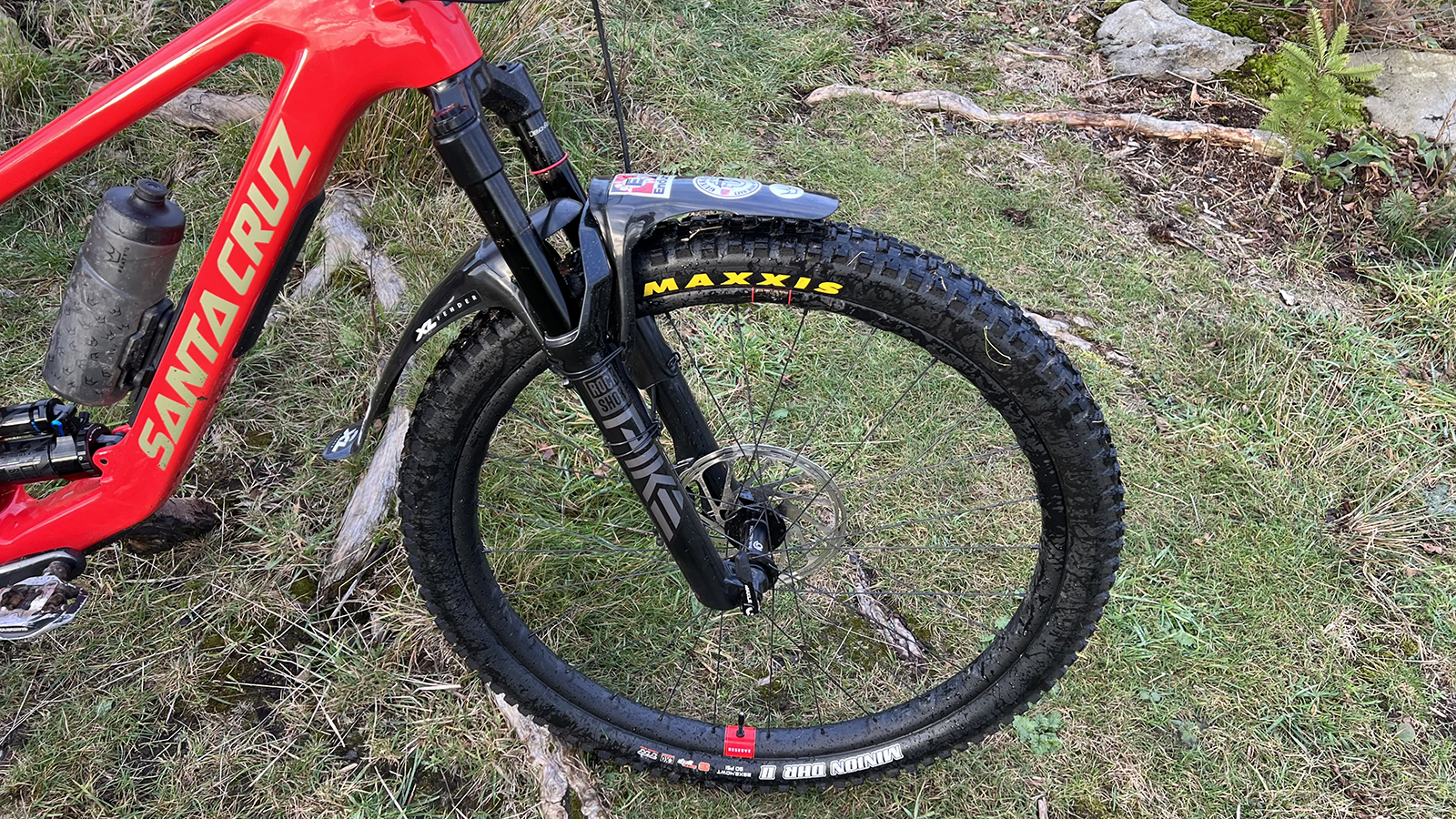
Ride, handling and performance
It’s soon clear that the V5 5010 is a very different bike to the V4. While the previous bike was actually a fraction slacker in the head angle, it flicked, slid and flared its 27.5in front wheel with zero sense of self-preservation. Responses were pretty much instant and reckless, with a weight placement pendulum that swung between dramatic oversteer and understeer with minimal warning. The interaction between the chain – and therefore your legs – and the rear suspension was also much more obvious. Kick hard and the V4 would stand up, stiffen and launch. Do it at the wrong moment though and the chain jerk and square edge slap was significant.
The V5 definitely dials all that down noticeably. The bigger front wheel is much more stable and keener to hold a line. Rather than rubbing your face in every dumb move, it’ll sense check your steering. Trees are naturally avoided rather than dived towards with eager glee and loose high speed turns are calmer and surfed easily rather than twitched and tweaked through constantly.
While increased inertia, gyroscopic force and longer tire contact patch are all par for the course when adding a 29er wheel up front, but the ‘ride quality team’ at Santa Cruz have also deliberately altered the dynamic. Because a 29-inch wheel also moves rider weight back and lowers BB drop from a rear wheel point of view, the MX format can often leave the front end light and slippery. But remember that the chainstays are actually a mm longer on the 5010 than the Tallboy, which helps shift weight forward back onto the front tire. The steep 77.1/76.8-degree seat angle also shunts you forward when you’re in the saddle, so while there’s still more nose lift than a twin 29er, you’re not fighting to keep connected on steep climbs or upward turns.

As you’d expect the behavior of the back end is also modified from the most dramatic examples of super-short rear end MX/mullet bikes I’ve ridden. That means it actually tracks with some degree of resolve rather than constantly feeling like it’s bursting to get out sideways from underneath you. While the bike still pivots around its rear axle noticeably tighter than a twin 29er, it doesn’t feel like the wheel is right under your seat. Don’t get me wrong, you can still kick it out easily and it’ll whip a switchback noticeably faster than a twin 29er. I’m delighted to say that the back end will still break out like the back legs of a spring lamb (and give you similarly giddy vibes) if you dive bomb the nose into a dropping turn, or crest a lip under side load, hunting for the next apex to skewer. But overall it feels more balanced and ‘grown up’ than the 5010 ever has before.
The VPP layout (call it kinematic if you want to be posh/sciency) has also been changed in line with a general trend we’re seeing from Santa Cruz even on its XC bikes. The new geometries reduce pedal interaction (less anti-squat) and brake extension (anti-rise) for a more neutral ride. The shock rate is also a straighter, steeper line on the new 5010. Together that means it’s more sensitive in terms of ground tracking at the start, with less pedal pull back to interrupt torque or traction.
As a result it pushes through the stroke then past static sag pretty easily, so it feels like a longer travel bike in terms of responsive root, rut, rock, dip etc. traction. While the smaller rear wheel doesn’t roll over chunks as easily as a 29er, the lower effective BB of the MX setup means a more rearward axle path. As a result, I actually found the 5010 clawed its way up and over lumpy stuff and blatted through blocks better than the Tallboy.
Support then builds and firms up significantly through the mid stroke where longer travel bikes can often wallow and feel fatty. This provides a solid footing to push through turns or pump rollers with. The ramp up continues to rise as it pushes deeper, so while I consistently got about 120mm into the 130mm travel, it was rare that I got the red indicator ring far into the markings that denote the start of the hydraulic bottom out damper. That travel is there if you really slam or case the back end though and the big ramp up means you can run the bike with more sag and still not bounce off the bumpers much.
While it doesn’t make a big difference on the geometry sheets (around 0.3 degrees depending on size), the flip-chip at the back of the shock makes a noticeable difference in terms of shock rate. Specifically, it offsets the natural ‘hammock’ curve of the air shock more in the ‘Hi’ mode, so I’ve actually been going through the fiddly process of switching it back and forth for different rides rather than just leaving it in ‘Lo’ as the default setting.
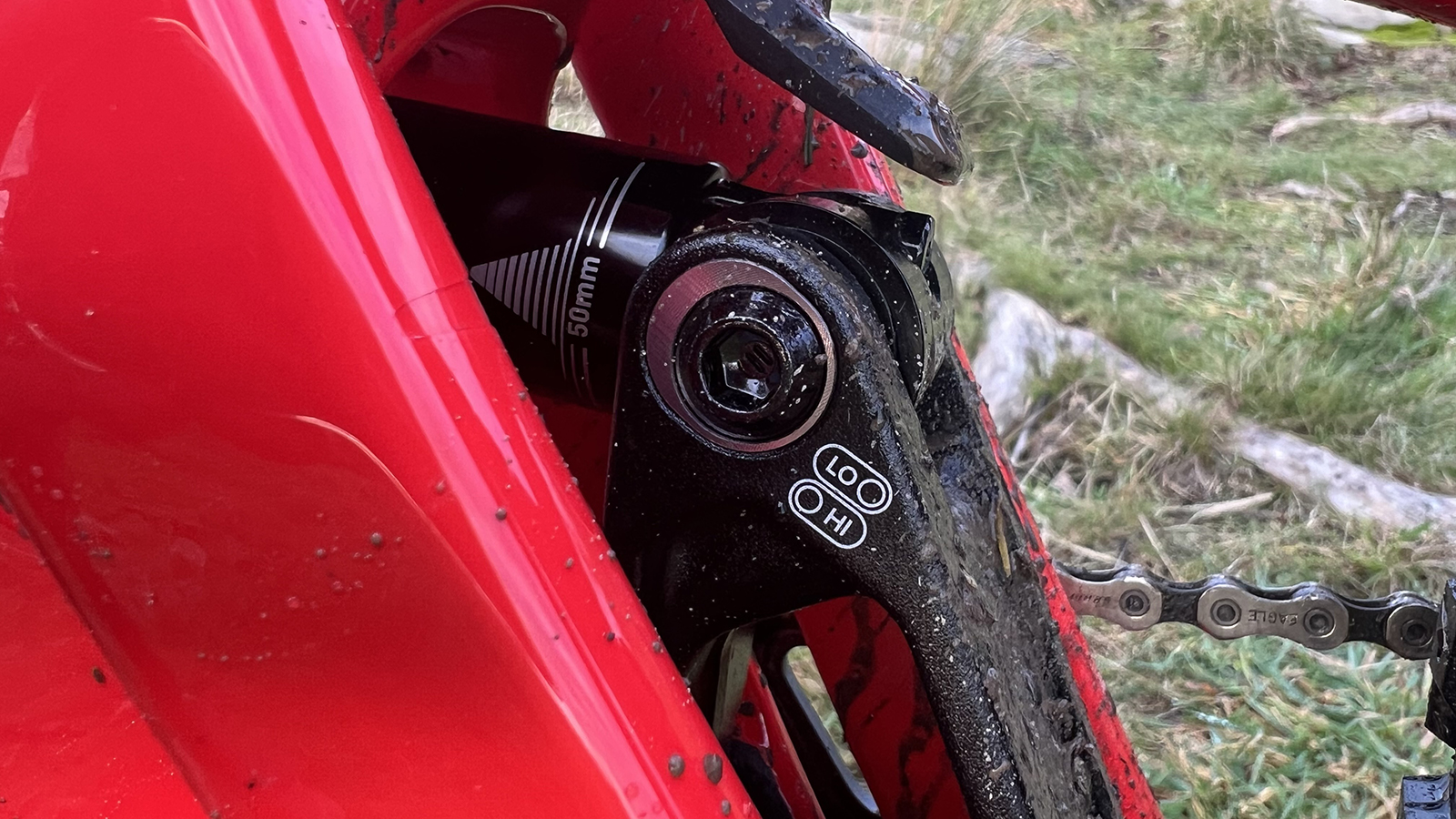
And this is the point where I realise that yet again a deep dive into the details of the bike – not helped by the fact that Santa Cruz has three separate ‘Rolling Door’ podcasts dedicated to the discussion of the 5010 and MX bikes – might have buried the most important part of the review. What does this bike actually feel like to ride?
There’s no doubt that Santa Cruz has pushed the 5010 more towards a gravity groove. For a start, the current tire spec is an absolute speed killer as soon as things straighten out or point upwards. That extra kilo of weight over the V4 is noticeable when you’re pointing uphill or trying to peel it off the ground too. The pedaling is now balanced and flowing with a slight compression under peak power – particularly out of the saddle – rather than having a lock out and launch vibe. In other words, you’re definitely losing some speed and spirit when it comes to close combat and climbing compared to the previous 5010.
Where it gains massively is capability and capacity to go seriously hard into sketchy situations. The bigger front wheel and monster wide bars create a front end you can really ram down the throat of serious trail trouble without flinching. Heavy duty wheel spec and aggressive rubber back that up from a ballistics and grip point of view too. Santa Cruz has also done a great job of minimizing the literal hang-ups that a smaller back wheel can suffer from everywhere from big block descents to tech climbs. However, while it’s definitely dialed down compared to the most extreme MX/mullet bikes around (see Specialized Status for details), the back end is still more alive and agile than a twin 29er.
Apart from the ‘meh’ brakes and stickier tires than I’d choose myself, the spec list is an absolute sweet spot in terms of high-level function at a mid-level price. A particular shout-out goes to the silent and superbly controlled Pike Select+ fork which has immediately started challenging the Manitou Mattoc Pro and Fox 34 Factory I’m currently testing head-to-head as my favorite mid travel fork. While a piggyback shock might seem overkill on a 130mm bike and definitely adds to the extra weight of the V5, the tune and overall performance from super grip over stutter bumps to serious slams is very welcome when you let that front end talk you into something dumb.
In short, the harder you ride the 5010, the more you appreciate the depth of thinking sunk into every element of this bike in the best way possible. Which is invisible beyond the fact the wheels are always in the right place and the suspension is consistently doing exactly the right thing to make you feel like a whole lot better rider than you normally are.

Verdict
While part of me still pines for the hyperactive, hysterical but fantastic if you could tame it 5010 V4, the V5 is an absolute peach to ride and a perfect fit for where aggressive trail riding has headed. Yes it’s heavier and slower rolling (with current tire spec) than before, but I can’t think of any shorter travel trail bike where this hasn’t happened in its last generation. That weight is getting you genuinely useful internal storage and a far more capable, rather than chaotic, front end vibe. Plus, it’s still lighter than its longer travel stablemate which gives it an edge over bikes like the Canyon Spectral 125 where there’s no weight or responsiveness gains from reducing travel. While the Hightower might be the better all-rounder and the Tallboy might be the faster pedaler, the 5010 is also a seriously rapid ride for the same agility and corner entry and exit speed reasons almost the whole World Cup DH field is running an MX setup.
It fitted me really well in terms of the new angles, placing me exactly where I wanted to be without feeling weird. There’s a ton of sizing options meaning that applies to more people than most too.
Typically for Santa Cruz, it’s a great practical choice for hard riders in terms of bearing design, easy servicing, frame protection and overall strength. And the fact that frame, bearings, wheels and bars are all lifetime-warrantied makes investing in the RSV spec a wise investment not just an indulgence. Especially as this older AXS spec 5010 is going for a big discount at the moment.
To answer the most important question that we started with though, the bottom line of all the rebalancing and obsessive dynamic detailing is that the new 5010 is a bike that makes you feel like an absolute hero when you point it down your favorite tech trail and let rip. And that sounds a lot like the definition of "the best handling trail bike" to me.
Test conditions
- Surface: Random rocks, roots, loam, snow, mud, trail center kitty litter, bouldery badness
- Trails: Off-piste local DH and tech, black, red and blue trail center runs
- Weather: 10 degrees to several below 0 C. Snow to rain to frozen with blue skies
Tech specs: Santa Cruz 5010 GX AXS RSV
- Discipline: Trail
- Price: $7,899 / £6,999
- Head angle: 65.2/64.9 degrees
- Frame material: Santa Cruz Cabin C carbon fiber
- Fork: RockShox Pike Select+, 140mm
- Shock: RockShox Super Deluxe Select+, 210x50mm 130mm travel
- Size: XS, S, M, L (tested), XL, XXL
- Weight: (30.68lbs / 13.92kg) 14.2kg (L actual)
- Wheel size: 29 front and 27.5 rear
- Chainset: SRAM Eagle GX 175mm with DUB bottom bracket
- Rear mech: SRAM Eagle GX AXS
- Shifter: SRAM Eagle GX AXS
- Cassette: SRAM XG1275 Eagle 12-speed 10-50T
- Brakes: SRAM G2 RS 4-piston hydraulic disc brakes with 200/180mm rotors
- Tires: Maxxis Minion DHR II 3C MaxxGrip, EXO, TR 29 x 2.4in front and 3C MaxxTerra 27.5 x 2.4in rear
- Wheels: Reserve 30|HD carbon rims on Industry Nine 1/1 hubs
- Bars: Santa Cruz 35 Carbon Bar, 800 x 35mm mm
- Stem: Burgtec Enduro MK3, 42 x 35mm
- Grips: Santa Cruz Bicycles House Grips
- Seat post: RockShox Reverb Stealth, 31.6mm
- Saddle: WTB Silverado Medium CroMo







